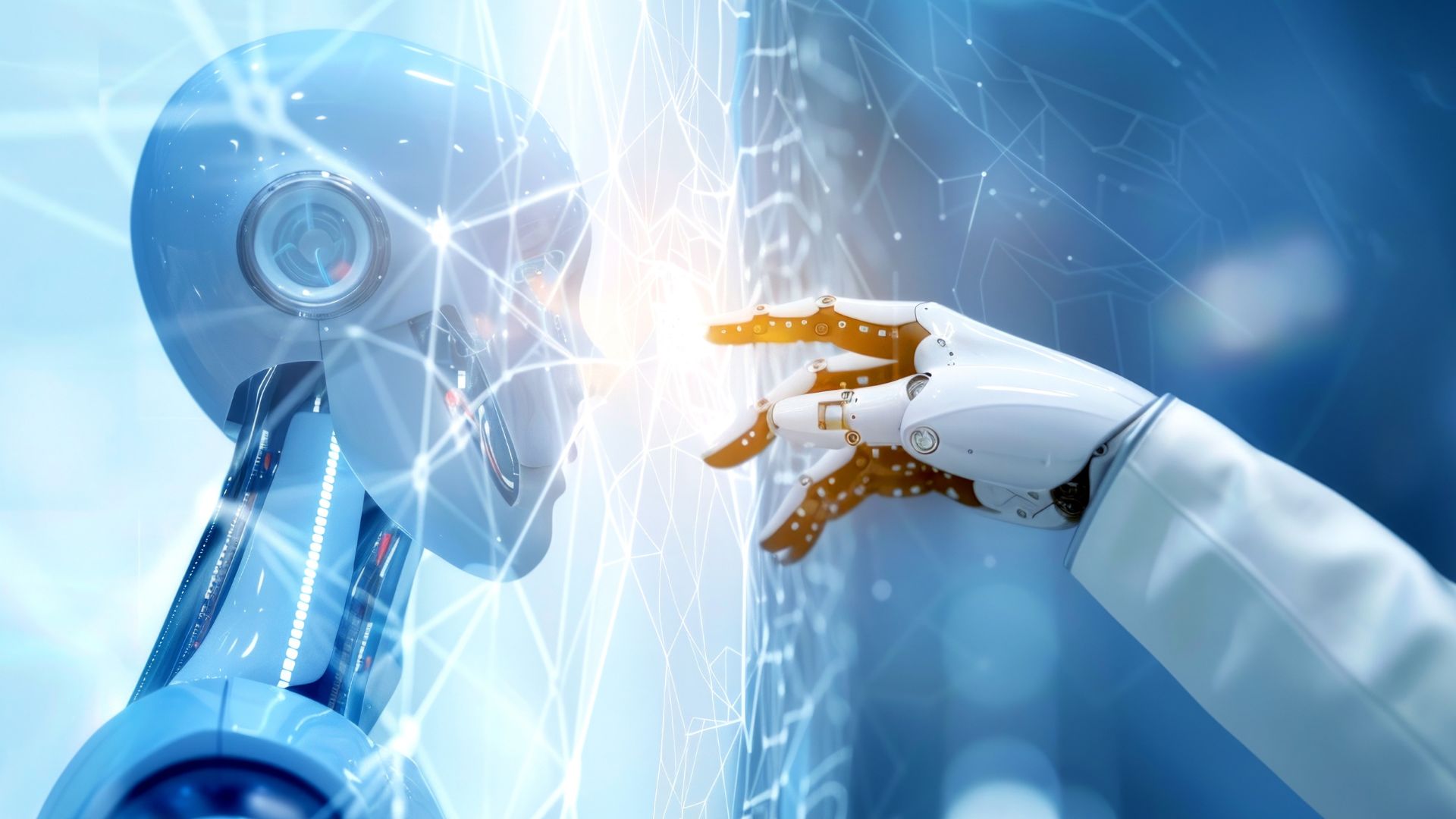Imagine a future where organizations adapt to change effortlessly, where resistance is anticipated and overcome before it even surfaces, and where precise, data-driven insights illuminate the path to AI-driven transformation. This approach is not a distant dream but a reality being shaped today by integrating Artificial Intelligence (AI) into change management. In an era where AI-driven transformation is no longer a choice but a necessity, the question is no longer whether to transform but how to effectively navigate the complexity of change.
Organizations across industries grapple with a seismic shift as digital transformation becomes the cornerstone of survival and growth. Yet, the road to transformation is often riddled with challenges: employee resistance, unclear communication, leadership gaps, and project mismanagement. Enter AI—a game-changing ally that redefines how we manage and execute change at scale.
This article explores how AI revolutionizes change management, presenting real-world use cases, challenges, and forward-looking trends that signal a new era of transformative agility.
The Core Challenges of Change Management
Before diving into AI’s transformative potential, it’s essential to understand why traditional change management efforts often falter. Below are the critical hurdles organizations face:
- Resistance to Change
Humans naturally resist disruption, especially when it threatens familiar routines or job security. However, AI’s ability to anticipate and address this resistance with clear communication, trust-building, and proactive concern-addressing offers a hopeful path forward.
- Leadership Gaps
Leadership plays a pivotal role in setting the vision for change. When executives need to support and champion change initiatives visibly, the resulting lack of direction can stall momentum.
- Communication Breakdowns
Miscommunication or lack of consistent messaging breeds confusion and resistance. Transparent, two-way communication channels are essential to foster understanding and engagement.
- Employee Detachment
Employees often feel excluded from decision-making processes, leading to disengagement. Actively involving them in planning and execution fosters ownership and reduces friction.
- Inadequate Skills and Knowledge
Introducing new technologies requires employees to upskill rapidly. A lack of training and support can amplify resistance and hinder adoption.
- Change Fatigue
Constant or poorly paced changes can lead to burnout. Organizations must carefully sequence initiatives and celebrate milestones to maintain morale.
- Weak Metrics and Oversight
Proper evaluation frameworks make measuring success or refining strategies during implementation easier.
How AI Revolutionizes Change Management
AI introduces a new paradigm to change management by providing precise insights, automating processes, and enhancing engagement. Here’s how:
- Predictive Analytics: Anticipating Resistance Before It Happens
AI analyzes historical and real-time data to identify patterns that signal potential challenges. For instance, predictive models can highlight departments most likely to resist change, enabling targeted interventions.
- Sentiment Analysis: Gauging Employee Emotions
AI tools can analyze employee feedback from surveys, emails, or social platforms through advanced natural language processing, offering leaders a pulse on workplace sentiment. This step enables timely adjustments to strategies and communication.
- Personalized Learning Pathways
AI-driven recommender systems can tailor training modules based on an employee’s role, skill gaps, and preferences. Personalized learning boosts engagement and accelerates the adoption of new systems or processes.
- Real-Time Dashboards: Visibility into Progress
AI-powered dashboards offer leaders live insights into the status of change initiatives, enabling agile decision-making. For example, if a specific team lags in adoption, resources can be reallocated to provide additional support.
- Scenario Simulation: Playing Out the ‘What Ifs’
AI-powered simulations allow organizations to model different strategies and predict their outcomes. This approach enables decision-makers to test various approaches before committing resources.
- Continuous Monitoring and Feedback Loops
AI systems continuously analyze the progress of change initiatives, providing actionable feedback and identifying areas that require refinement.
Real-World Examples of AI-Driven Change Management
Several forward-thinking companies have already harnessed AI to transform their change management processes:
|
Company
|
AI Initiative
|
Outcome
|
|---|---|---|
|
Predictive maintenance using AI and machine learning
|
Reduced downtime and optimized performance
|
|
|
AI-powered chatbot for customer interactions
|
Streamlined processes and enhanced satisfaction
|
|
|
AI-driven recommendation systems
|
Increased customer retention and sales
|
|
|
Siemens
|
Real-time manufacturing analytics via AI platforms
|
Cost reduction and operational optimization
|
|
AI in quality control processes
|
Improved product quality and efficiency
|
|
These organizations illustrate how leveraging AI in change management can drive operational efficiency, employee engagement, and customer satisfaction.
The Future of AI in Change Management
AI’s role in change management is just beginning to unfold. Here’s what the future holds:
- Intelligent Change Management Platforms
AI will power end-to-end platforms offering everything from scenario planning to real-time progress tracking. These platforms will act as a central hub for orchestrating complex transformations.
- Enhanced Employee Experience
AI-driven tools like virtual assistants will provide employees with on-demand support, training, and resources, creating a smoother and more personalized transition experience.
- Ethical AI and Bias Mitigation
Organizations will increasingly focus on ensuring AI systems are free from bias, fostering transparency and trust in decision-making processes.
- Agile Change Strategies
Machine learning algorithms will enable organizations to adopt more agile approaches, continuously adapting strategies based on real-time data.
- Human-AI Collaboration
AI will not replace human expertise but rather augment it. By combining human intuition with AI’s analytical capabilities, organizations can create more balanced and effective change management strategies.
Key Insights for Implementation AI-Driven Transformation
To maximize the impact of AI-driven change management, organizations must:
- Invest in Data Infrastructure: AI thrives on quality data. Establish systems to collect, organize, and analyze relevant data.
- Foster Collaboration: Ensure AI complements human decision-making rather than replacing it.
- Train Leadership: Equip leaders with the skills to interpret AI-driven insights and communicate their relevance.
- Adopt an Iterative Approach: Continuously refine strategies based on feedback and outcomes.
Conclusion
In an age where AI-driven transformation is critical to survival, the ability to manage change effectively is a competitive differentiator. AI offers unprecedented tools to anticipate challenges, enhance engagement, and refine strategies. However, the success of AI-driven change management depends on balancing technology with human insight. Organizations that embrace this synergy will not only navigate the complexities of change but emerge as industry leaders.
Businesses can transform challenges into opportunities by leveraging AI's potential in predictive analytics, sentiment analysis, personalized training, and agile decision-making. The future of change management is here, and it's intelligent, adaptive, and powered by AI. With AI, organizations can anticipate challenges, enhance employee engagement, and make more informed and agile decisions. Are you ready to embrace the transformative power of AI in change management?
Talk to One of Our Experts
Get in touch today to find out about how Evalueserve can help you improve your processes, making you better, faster and more efficient.


